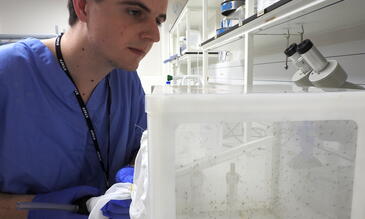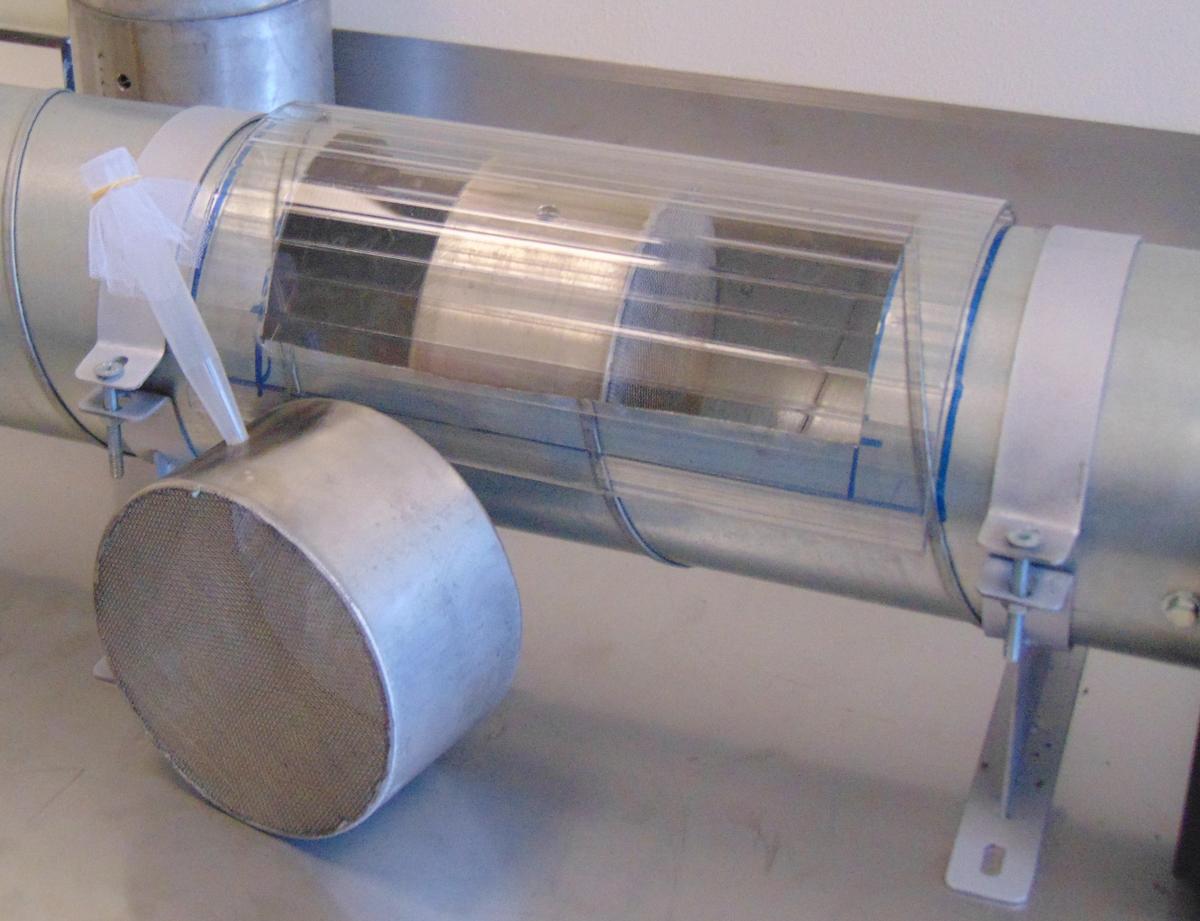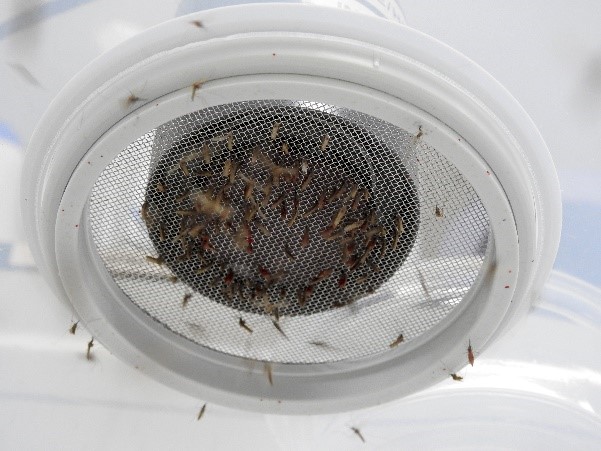
With a team of researchers and close links with the Vector Biology Department at LSTM, we are able to perform exploratory and developmental work to support and optimise the GLP testing performed within LITE.

This includes investigations to explain unexpected results, experiments to validate and optimise testing methodologies, as well as the development of new tests altogether. A range of conventional bioassay types, including those recommended by the WHO and the CDC, are used by LITE to test the efficacy of insecticides by either applying them directly to the mosquito or allowing the mosquito to contact them in a range of ways suitable for the intended use. These assays were designed whether mosquitoes are quickly incapacitated or killed, usually after they have contacted a surface treated with an insecticide. But we are also able to develop new methods to test other effects insecticides might have on mosquitoes, for example behavioural changes, repellence, or sterilisation. We are also able to develop methods to expose mosquitoes in different ways, to tailor testing to the specific nature of the product, and to answer specific questions about how it works.

Conventional bioassays to measure the efficacy of vector control tools have been developed with fast acting pyrethroids in mind, for which they are very effective in exposing adult mosquitoes to insecticide treated surfaces and measuring immediate knock down and mortality 24 hours later. However, the next generation insecticidal compounds, LLINs and IRS formulations are often slower acting, and may cause phenotypes other than rapid mortality. With access to two PEET Grady chambers, custom built spatial insecticide testing chambers, and a wind tunnel we are able to test the efficacy of insecticides which are aerosolised or disseminated through an emanator or passive delivery device, for example. Through the development of bespoke bioassays we can expose mosquitoes in different manners, for example in a blood or sugar meal , or in novel personal protective tools, and can measure the response of interest to a mosquito control product, for example blood feeding avoidance, excito-repellency, induced sterility, or sub-lethal effects.
As a group we undertake varied research projects to support the testing work performed by LITE, including method optimisation and validation exercises, more in depth characterisation of the insecticide resistant colonies held by LITE and the implications of insecticide resistance, exploration into potential new equipment or testing methods, and work to address research questions related to IVCC projects or to support those of partner organisations.Close links to other research groups within the Vector Biology Department at LSTM mean we have access to many relevant fields of expertise, allowing us to link results from our testing to the cutting edge knowledge about, for example, mechanisms of insecticide resistance, behavioural interactions of a mosquito with a vector control tool, and molecular interactions of a mosquito’s metabolic enzymes with an insecticidal compound of interest. It also means we have access to newly colonised mosquito strains from areas of interest from the point of view of newly characterised resistance mechanisms as well as key areas for vector control.
As an example, a recent collaborative project utilised historic colony selection and profiling data which was collected during routine maintenance of the LITE colonies. The project reviewed the evidence for differential insecticide resistance within the pyrethroid class, and the LITE dataset was used to analyse the variability observed during repeat susceptibility testing. This shows the additional value that can be gained from data collected as part of routine quality control measures.
